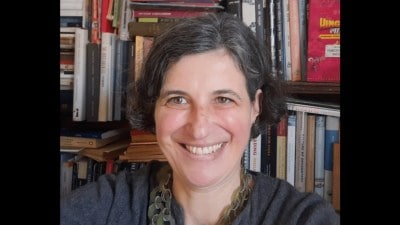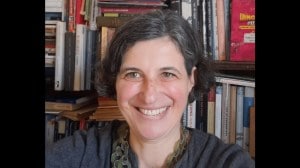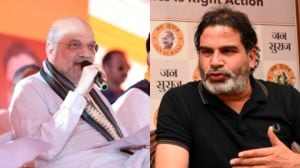In Pakistan, giving peace a chance
`No more Hiroshimas'. The slogan raised by anti-nuclear activists, most strongly in Japan, has since May 1998 found echo in South Asia, mi...

`No more Hiroshimas’. The slogan raised by anti-nuclear activists, most strongly in Japan, has since May 1998 found echo in South Asia, miles away from the places where Little Boy and Fat Man created atomic hell on August 6 and August 9, 1945. There were anti-nuclear sentiments earlier too, but the nuclear tests at Pokhran and Chagai brought the danger closer home. The capacity of India and Pakistan to wreak similar havoc, most likely on each other, was celebrated by jingoistic governments and their supporters in both countries when they emerged from the nuclear closet. There was dancing in the streets and sweetmeats were distributed. Noses were thumbed at the other party and dares and challenges thrown out in the style of wrestlers in a ring.
But not everyone was celebrating. There was deep mourning and fear in both countries by those who understood the significance of this step. Far from being `mutually assured deterrence’, in the case of India and Pakistan, MAD stands for `mutually assured destruction’. The bombs are referred to as the Hindu and the Islamic bomb by those who refuse to realise that weapons have no religion. Tension between the two neighbours has never been as severe as it became post-testing. In these troubled times, the voices of those calling for peace become even more significant, as they persist in their stand despite being pilloried as traitors, enemy spies, anti-nationals, even anti-religion.
Strengthening the voices of peace activists in Pakistan is a recently formed group in Lahore. The Lahore Peace Forum (e-mail lahore.peace@usa.net) comprises activists who have been involved in raising awareness since May 1998, and who have been advocating peace between India and Pakistan for long before that. Many are members of groups affiliated with the Joint Action Committee (JAC), an umbrella group of 30-odd NGOs.
Two years ago, JAC was recognised for its efforts with the UNESCO Madanjeet Singh Peace Prize, alongside an Indian peace worker. “We felt it was necessary for a group to be developed in Lahore that would focus on peace and the anti-nuclear issue alone,” explains Farooq Tariq, General Secretary of the left-wing, trade-union oriented Labour Party of Pakistan, and de facto convenor of the LPF.
There are already such groups in Islamabad and Karachi, such as the Citizens Peace Committee (CPC) and Action Committee Against Arms Race (ACAAR). Anti-nuclear sentiments are also strong in Balochistan province, where there is anger at being `used as guinea pigs’, as Sardar Ataullah Mengal of the Balochistan National Party (BNP) said in his protest after Pakistan’s nuclear tests. The BNP protested the tests being conducted without asking the permission or even informing the Balochistan government about them. The demonstration organised by the party in Quetta last year on the anniversary of Pakistan’s tests drew some 5,000 people. The event was largely ignored by the media.
All these groups are affiliated with the Pakistan Peace Coalition, an umbrella organisation at the national level. And although the momentum against nuclear weapons picked up only since the tests of 1998, the Movement for Nuclear Disarmament has been active in Islamabad for some time. It organised the first public anti-nuclear event in Pakistan in 1985 on the anniversary of Hiroshima in Rawalpindi. Those involved are still active in the issue, like Dr A.H. Nayyar and Dr Zia Mian, both physicists.
This year’s leitmotif is the `Cloth Banner Campaign’, initiated by Wajahat Malik, a poet and activist in Islamabad. Picked up by groups all over the country and also in India, the campaign comprises using white cloth divided into square pieces of a metre in length. A slogan for peace in bold letters in the middle is surrounded by messages for peace or against nuclear weapons, written and signed by members of the public. The pieces are stitched together and used in various ways, for example, to create banners. Activists hope to use these banners `as a vote of no confidence against nuclear weapons by the subcontinent’s silent majority’.
Activists face a threatening atmosphere, created by religious right-wing forces and police. As the government glorifies the nuclear tests every year and right-wing forces make aggressive noises against those opposing this glorification, peace demonstrators prepare to be attacked in public. Yet, passers-by and onlookers are, if not openly supportive, at least not hostile. Some hesitantly join in or watch, others drive by flashing victory signs, and yet others take away pamphlets to read or further distribute.
The LPF, in collaboration with JAC is holding a seminar titled `No More Hiroshimas’ on August 6. Cloth banners with signatures calling for peace will be draped around the Lahore Press Club and a youth theatre group will present a play Ananas aur Atom Bomb, by the late Khwaja Ahmed Abbas of Bombay. A public meeting will be held in Quetta as well. Similar protests are being organised in Balochistan, where around 2,000 signatories have recorded their protest against nuclear arms race.
Balochistan province, in fact, observes May 28 as Black Day to protest being used as a site for nuclear tests that caused a famine that has killed around 300 people and displaced 3 million people and 8 million cattle from their ancestral homes.
Beena Sarwar is a Pakistani journalist
`My rage will last till I die’
Modern day Hiroshima gives no indication of the large-scale destruction that followed the dropping of an atomic bomb exactly 55 years ago at 8:15 am. The only `landmark’ is the A-bomb Dome, 160 metres northwest of the hypocentre, which was formerly the city’s commercial exhibition.
After much debate, it was decided in 1966 to preserve the skeletal structure as a reminder to the tragedy of nuclear weapons. The constant flood of visitors and flowers bear testimony to the fact that the message has not been forgotten. Yet, perhaps nothing can be more moving than a talking head. Like 78-year-old Koshiro Kondo, one of 90,000 bomb survivors in Hiroshima and among 310,000 nationwide. Kondo says he doesn’t like coming to the peace memorial as it takes him back to the horrors of that day.
A freshman in lower secondary school at the time, Kondu, like other students, was involved in clearing the debris from buildings demolished to make fire lanes in Hiroshima. August was holiday time, but because of the war, around 8,400 middle-school students had to help with demolition work. Kondu had a day off. “If I had gone to work, I would have been destroyed as I would have been just 1 km from the hypocentre,” he says.
Kondu’s house was 2.3 kms away from the hypocentre, and that’s probably why he lived to tell his tale. “I felt the intense heat and I covered my face with both hands,” recalls Kondu. He fainted right away and when he came to, he was trapped under the rubble of his house. He was bleeding from the back of his head, yet, he went about trying to see if he could help others. His brother, who was two years older, died immediately. “We couldn’t even get his remains,” he says. The rest of his family, two sisters and father, died later from the after-effects.
“I had no knowledge of what a nuclear bomb was at that time,” says Kondu. It was only later that he comprehended the concept, but he still hasn’t embraced it. “The sound of the siren still shocks me and wakes me up in the middle of the night. When my hair falls or when I get diahorrea, I think it’s because of radiation,” he says. Kondu grapples with gastric and colon cancer, a throat tumour, along with the occasional bleeding gums. “I have three children and they are healthy,” he smiles.
Kondu suggests that Indian and Pakistani leaders pay a visit to Hiroshima. “Unlike some organisations, we are not thinking of taking America to court,” he said, “But my rage will last forever, till I die.”
SUNETRA CHOUDHURY
Readers can send feedback to focus@expressindiacom.



- 01
- 02
- 03
- 04
- 05




























